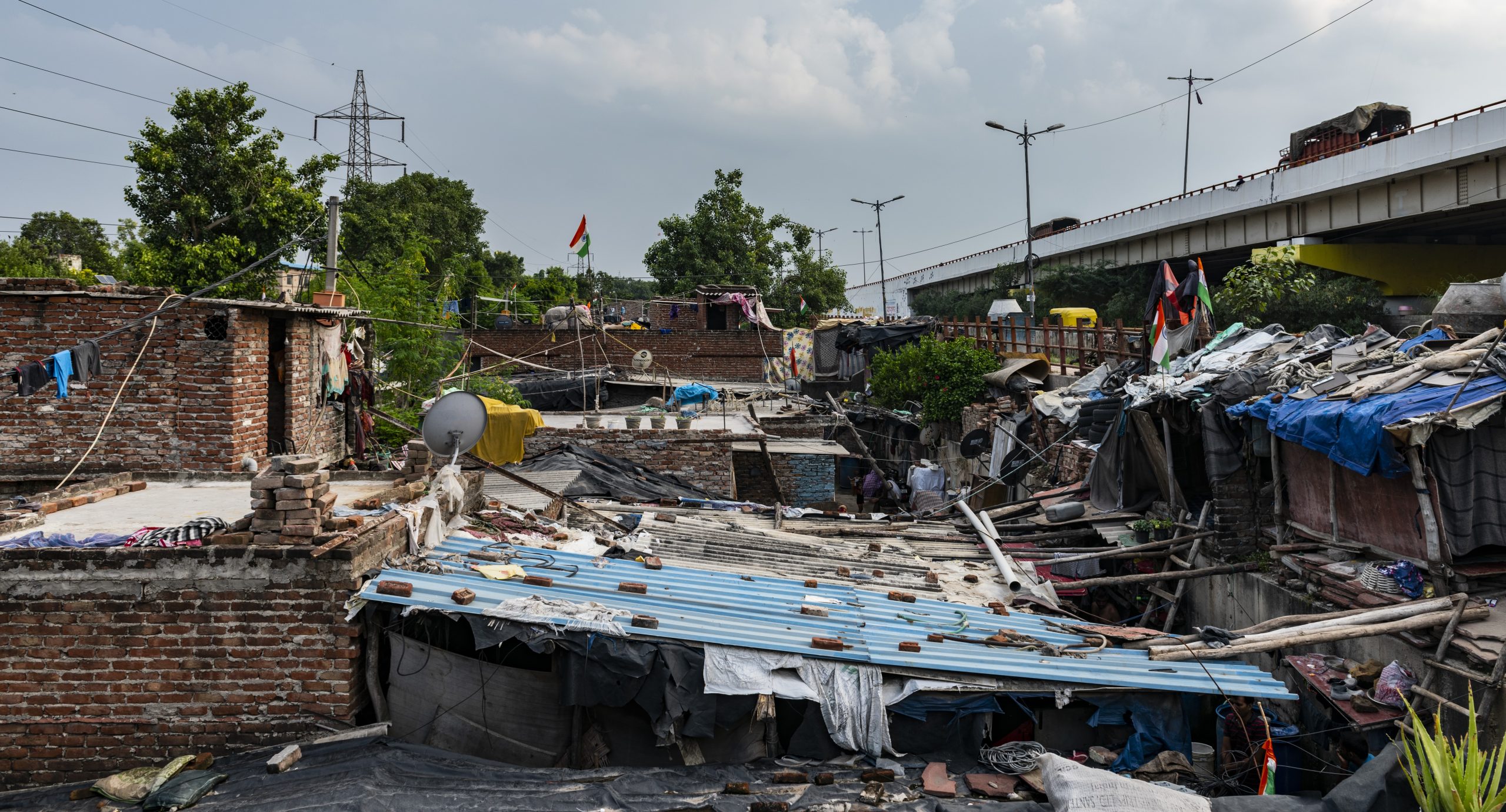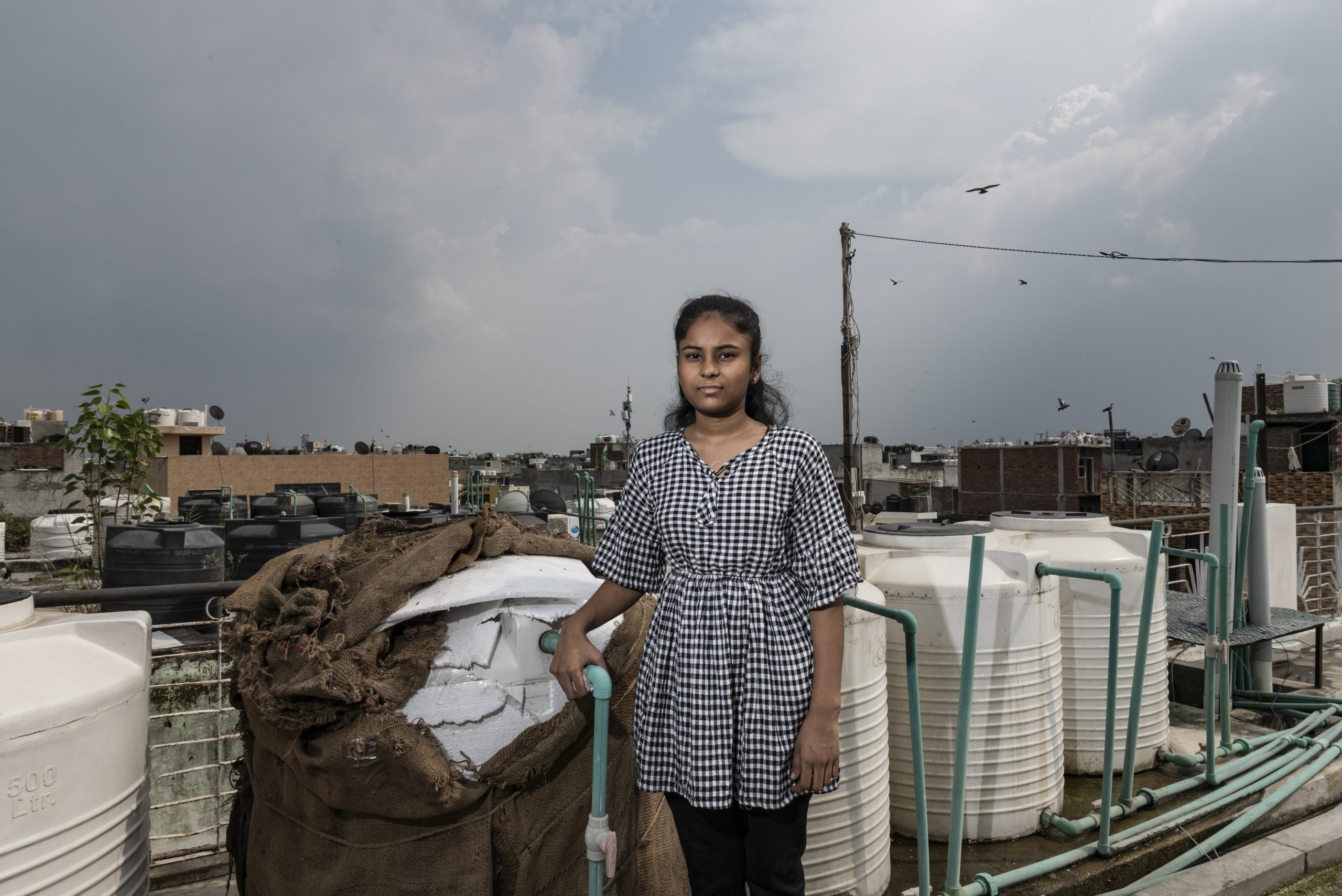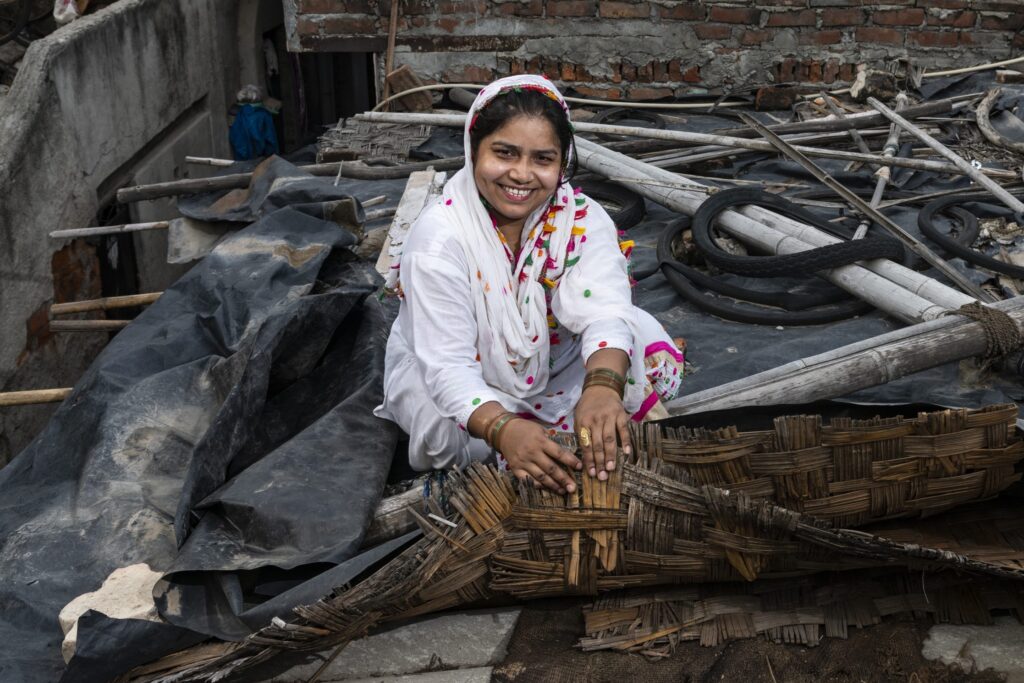As heat waves grow more common, frequent, and intense in India and around the world, researchers say it’s having a disproportionate effect on some of the world’s poorest communities.
In India, that harsher impact is being felt in the nation’s slums, which researchers say can be as much as 6°C warmer than other parts of the city
“In the slums, it is so difficult to step out and find shade on a hot summer day,” Anshu Sharma said. “It is so congested. The houses are often made of tin sheets, which heat up much faster compared to other materials.”
Sharma is the co-founder of SEEDS, a New Delhi-based disaster response and preparedness non-profit organization, which has measured the temperature disparity between the slums and other parts of the city.
Since 2017, SEEDS has been working with communities most vulnerable to heat waves, to help people come up with solutions to beat the heat. And now, with the support of Microsoft’s AI for Humanitarian Action grant, SEEDS has developed an artificial intelligence (AI) model to predict the impact of multiple hazards like cyclones, earthquakes or heat waves in any given area.
The model, called Sunny Lives, has generated heat wave risk information for around 125,000 people living in slums in New Delhi, India’s sprawling capital, and Nagpur, a central Indian city susceptible to intense heat waves.
Here’s the story of how SEEDS married cutting-edge technology, shoe-leather surveys, and collaborative project management to raise awareness about what is often an invisible enemy.
An invisible enemy

In humans, heat stress is known to cause higher blood pressure, extreme fatigue, and sleeping troubles. The risk of heat stress is highest outdoors, between noon and 4 p.m. But, alarmingly, in some cases staying indoors might be more dangerous.
Quite simply, if you don’t live in a house made from the right kind of materials, it could be hotter indoors than it is outdoors. Sharma shared some numbers to drive home the point.
“Suppose the outdoor temperature is about 38°C,” he said. “If you’re in a tin shack in a slum, the indoor temperature can be as high as 45°C. And it’s the older people, and young children, who spend the day indoors, that suffer.”
Central to the problem is the fact that most makeshift construction materials used in urban slums trap more heat, thus increasing the indoor temperature. The roofs are often made of tin sheets and houses are crammed together without windows or ventilation.
A study recently published in Nature examined the indoor temperature variations in different housing types across five low-income locations in South Asia. One of the key findings from the study was about the monthly temperature variation in tin-roofed houses in a village in the western Indian state of Maharashtra: in the months of May and June, the temperature was a good three or four degrees Celsius higher compared to the outdoor temperature.
That’s been an especially concerning scenario this year.
Blazing summers in the Indian subcontinent are considered the norm, but even by the region’s own standards, the heat this year was intense and widespread. In mid-May, the India Meteorological Department reported record high temperatures between 45°C and 50°C in several parts of the country.
Experts say such intense heat waves are likely to continue. According to a study published in the Weather and Climate Extremes journal last year, India saw more than double the number of heat waves between 2000-2019 than it did between 1980-1999.
“In the future, these kinds of heat waves are going to be normal,” Professor Petteri Taalas, the secretary general of the World Meteorological Organization (WMO), said in a recent report.
SEEDS’ biggest challenge is to communicate the dangers of a heat wave. Unlike floods, earthquakes or cyclones, the impact of a heat wave is not exactly visible. That’s why people tend to pass it off as a routine occurrence.
There’s another obstacle: the lack of good data. “Most of the deaths that happen from heat do not get reported as heat stress deaths,” he said. “Because eventually, the person will die of a fever or a cardiac arrest or dehydration. And that is what is logged.”
AI in the community
SEEDS uses the Sunny Lives AI model that was developed with Microsoft’s AI for Good Lab and supported by a grant from the AI for Humanitarian Action program. The risk pipeline that leverages the AI model was co-developed with data science company Gramener and provides a risk map for a particular area. On the map, each building is color-coded according to its “risk score.”
Built-up density, vegetation, proximity of the building to a water body, roof-type classification: these are some of the key parameters that comprise the matrix that SEEDS uses to calculate the risk score. The rooftop material, with its attendant heat-absorbing capacity, is a crucial data point: buildings are identified, classified, and mapped based on this capacity.
The risk map can be overlaid onto a regular map available on a smartphone, which makes it handy for volunteers to access when they go out into the field. The maps help them figure out various action points: where they must go to issue warnings, where water scarcity could be an issue, or where the local authorities will need to direct resources.
But it is not enough to use technology in isolation. AI models are highly technical and difficult to understand, so it’s important that the information passed on to people is lucid and simple.

For this, SEEDS conducts quizzes, contests, and focus group discussions through the summer months via a network of schools, NGOs, and volunteer groups, who do door-to-door campaigns throughout Delhi.
“People don’t care if we tell them that the risk score is five for your house,” Mridula Garg, lead for Urban and Built Environment at SEEDS, said. “But incorporating the whole messaging into our quiz really helped. We got them to answer questions about their household surroundings and helped them come up with their own risk scores.”
The ‘beat the heat’ quiz also includes multiple choice questions like ‘what should you drink to fight dehydration’ and ‘how to identify symptoms of heat stress’ to drive more awareness about heat stress.
Over the last couple of years, SEEDS has reached out to 23 slum communities in East Delhi with this participatory approach. Their first point of contact was schoolchildren, who are generally more receptive to new information and bubbling with ideas.
Take Vanshika Paswan, a resident of Shakarpur in East Delhi. In the city’s blazing summers, her family’s overhead water tank used to heat up rapidly, dispensing piping hot water even after sunset. As part of an awareness contest conducted by SEEDS, the teenager came up with a low-cost DIY solution to insulate the water tank.
The idea struck her when she saw a makeshift beverage cooler in a retail store near her home. Most local shops in her low-income neighborhood don’t have refrigerators. Instead, they chill food, water, and other beverages in ice-filled boxes made of polystyrene, or what is known as thermocol in local parlance. Drawing on this idea, Vanshika covered the overhead water tank with polystyrene sheets and jute sacks, which provided just enough insulation to stop the water from heating up.

SEEDS also proactively conducts interventions to help protect citizens at higher risk. During summers last year, they helped modify a house in East Delhi’s Kishankunj neighborhood.
“The residents were both old people living in a tin-roof house that used to get extremely hot in the summer,” Rinki Gupta, a project manager at SEEDS, said.
The team laid an insulation sheet on the roof, which helped bring down indoor temperatures. Soon after, other families in the neighborhood implemented the same solution but not everyone could afford the cost, which was around INR 15,000 (approximately US $190).
Razia, a domestic worker, was one among them. Inspired by the solution, she came up with an innovative low-cost idea to cool her own home. Instead of using expensive insulation sheets, she laid a few jute bags on top of her bamboo roof, which provided some insulation. One jute bag cost her only INR 50—less than a dollar—to purchase from local vegetable vendors.
Shifting goals
Until now, SEEDS’ heat wave model has focused on the socially vulnerable. But the organization is now engaging with various state governments in India to extend its model to middle- and high-income group areas. At the COP-26 summit last year, India pledged to go carbon neutral by 2070.
“Governments are now asking us to extend our AI model to come up with a science-based approach to reduce carbon footprint and carbon emissions,” Sharma said. “So we’re running the model in other residential areas too, over these flat concrete roofs (of multistorey buildings) and looking at what kind of surge in energy use will happen if there is a heat wave and how we can reduce that.”
What began as a disaster response organization is now moving towards addressing the looming question of climate change. This work could potentially have global applications.
Medha V. is a copy editor at FiftyTwo, a digital publication. She lives in Delhi.

